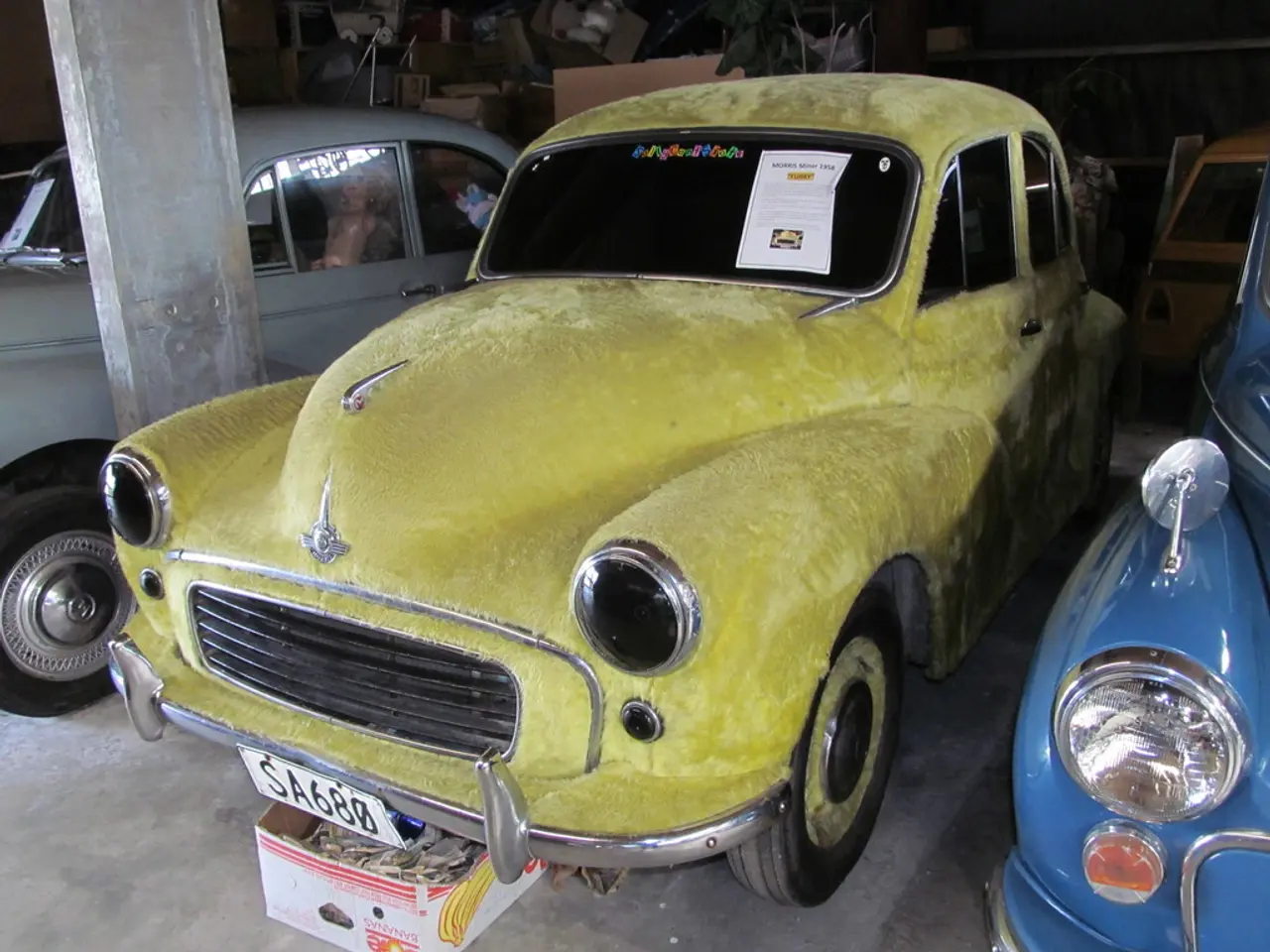Rethinking From Scratch: Overcoming Obstacles in Re-Designing (Part 1)
Bringing History to Life: The Restoration of Toyota's First Racing Car
In the halls of the Fuji Motorsports Museum, a piece of Toyota's motorsport history shines brightly - the Toyopet Racer. This iconic vehicle, Toyota's first foray into racing, has been meticulously restored by a dedicated team of engineers and artisans.
The process of reviving the Toyopet Racer was no small feat. With no existing drawings for the suspension components, the team, led by Daichi Sugimoto, had to design and build them from scratch. Sugimoto, a member of the Vehicle Electrical Architecture Development Department, joined Toyota in 2010 and currently works on developing accessory sockets for hybrid cars and BEVs.
Sugimoto was joined by Takahiro Tashiro, an expert in structural analysis, and Shinya Omura, who specialises in materials. Tashiro led the way in making strength calculations for the Toyopet Racer's suspension, while Omura focused on developing non-ferrous metals such as aluminum and magnesium.
Ding, the youngest engineer on the team, joined the project to deepen her understanding of vehicle dynamics by designing parts from scratch. Her involvement extended to the development of the next-generation Vehicle Dynamics Integrated Management system.
The team's efforts were not just about recreating the past. They aimed to understand the original design and functionality of the Toyopet Racer's suspension and braking systems, crucial for a car's basic functions: driving, turning, and stopping.
Tashiro and his team estimated the corner entry speed of the Toyopet Racer to be around 100 km/h. To determine the specs for the brakes, discussions involving every member working on the restoration project were necessary.
The suspension and related components are part of the vehicle's base and must be completed first to avoid causing trouble for the other teams. The team finalised the suspension's specifications considering ride height, look, and feel, as well as the material, mounting position, and spring rate of the leaf springs.
The Toyopet Racer, Toyota's first racing car, is now on display at the Fuji Motorsports Museum, a testament to the dedication and skill of the team that brought it back to life. This restoration project not only preserves a piece of Toyota's motorsport heritage but also provides valuable insights into the design and engineering of early racing cars.
[1] Toyota Times Article [2] Fuji Motorsports Museum [3] Toyota Motorsports History [4] Toyopet Racer Restoration Project
Despite the challenges, the team, including Shinya Omura, Takahiro Tashiro, and the youngest engineer Ding, focused on designing car-maintenance solutions for the Toyopet Racer, such as utilizing non-ferrous metals like aluminum and magnesium. This lifestyle update aims to ensure the car's longevity and performance with technology advancements, compared to the original materials used in the 1960s.
For better car maintenance and safety, the team considered upgrading the braking system of the Toyopet Racer, taking into account corner entry speed estimates, discussions with all team members, and the ride height, look, and feel of the suspension and suspension components.




